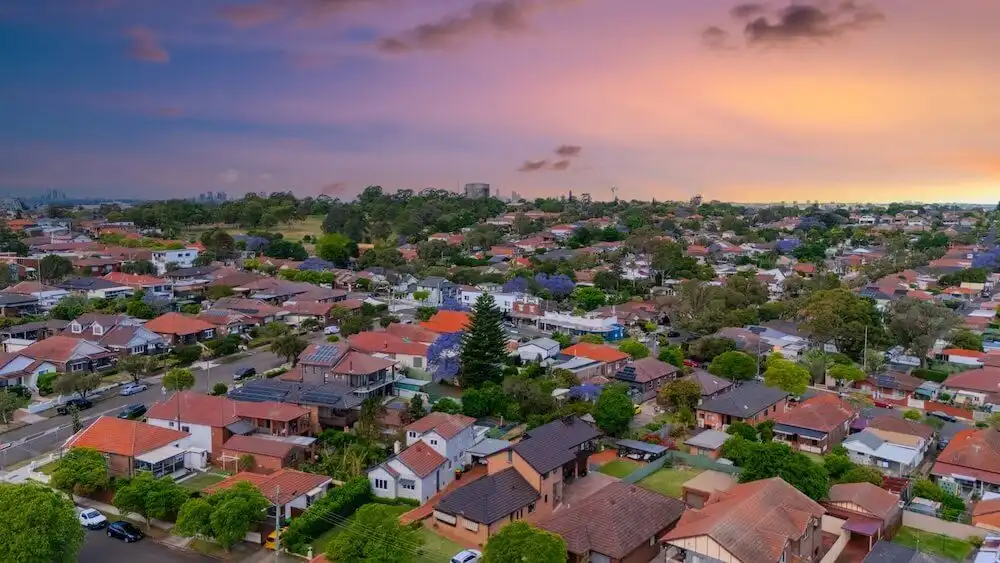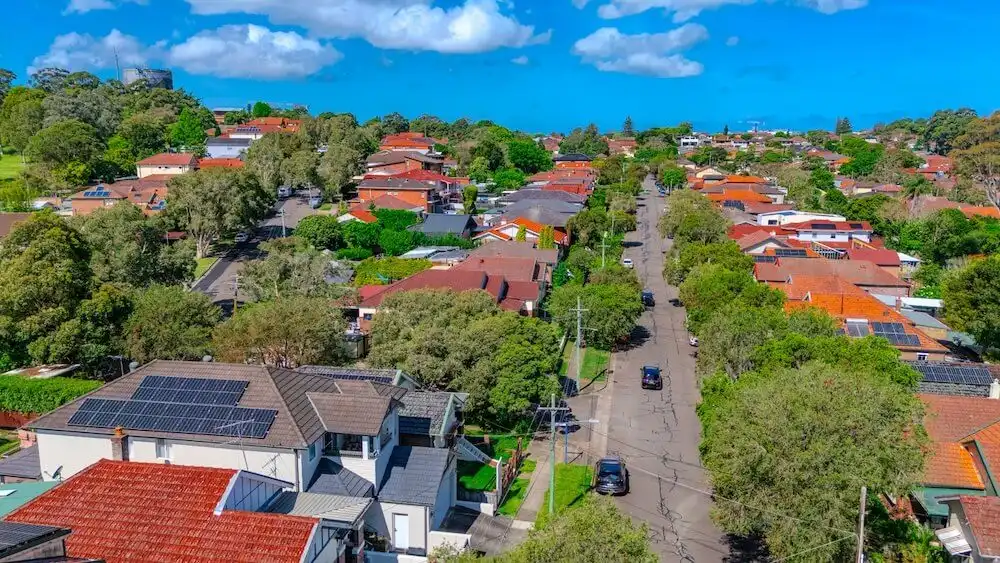Listings shortage drives strong spring price growth
The spring selling season is in full swing, and while it's ushered in the typical uplift in buyer activity, stock on the market remains far below average.
That's led to another month of solid property price gains across the country, with some markets seeing an uplift of more than +1.5 per cent in September alone.
Find out whether the momentum can continue as the end of the year approaches.

Get a free property value estimate
Find out how much your property is worth in today’s market.
Australian property prices: September 2025
The national median home price rose by another +0.8 per cent over September, lifting comfortably above $850,000 for the first time, according to Cotality's latest report.
That brings total gains for the year so far to just under +5 per cent.
| Market | Month | Quarter | Annual | Median value |
|---|---|---|---|---|
| Sydney | 0.8% | 2.1% | 3.0% | $1,241,054 |
| Melbourne | 0.5% | 1.0% | 1.9% | $805,880 |
| Brisbane | 1.2% | 3.5% | 8.8% | $969,868 |
| Adelaide | 0.9% | 2.5% | 6.2% | $855,998 |
| Perth | 1.6% | 4.0% | 7.5% | $855,267 |
| Hobart | 0.1% | 0.1% | 2.7% | $683,390 |
| Darwin | 1.7% | 5.9% | 12.9% | $558,595 |
| Canberra | 0.7% | 1.7% | 2.5% | $885,942 |
| Combined capitals | 0.9% | 2.3% | 4.3% | $941,457 |
| Combined regional | 0.7% | 1.8% | 6.6% | $700,688 |
| Australia | 0.8% | 2.2% | 4.8% | $857,280 |
Sydney had another very solid month with +0.8 per cent growth, while Melbourne accelerated, hitting +0.5 per cent.
Perth and Brisbane were again the standout performers of the major capitals, rising +1.6 per cent and +1.2 per cent respectively, with Adelaide not far behind at +0.9 per cent.
Darwin once again trumped the rest, though, posting a +1.7 per cent gain over September. Canberra held strong at +0.7 per cent, and Hobart returned to slightly positive territory with +0.1 per cent growth.
Regional markets sped up, too, with a combined movement of +0.7 per cent over the month.
Cotality's report noted that "Growth has once again become broad-based, with every capital city and rest-of-state region recording an increase in dwelling values over the month, quarter and most recent 12-month period."
However, it pointed out that "some divergence in the pace of growth is once again emerging."
Three key takeaways from the current market
A number of 2025 property trends have become more firmly entrenched, while other shifts are now just emerging. Here are the headline issues worth tracking.
Listings are at record-low levels, driving further growth
Lower interest rates and the typical spring seasonal uplift are clear contributors to another strong month of price growth, but perhaps the biggest factor has been a shortage of stock.
Over September, listings across the capital cities were around -18 per cent below the five-year average. At the same time, sales volumes for the September quarter were +7.3 per cent higher than average.
That imbalance between supply and demand has sent auction clearance rates up from around 62 per cent in March to around 70 per cent since August.
Cotality's research director, Tim Lawless, pointed to accelerating growth in Darwin, Perth and Brisbane in particular as an effect of the listings shortage.
"The number of homes for sale at the end of September was about 53% lower than average in Darwin, 45% below average in Perth and down 31% in Brisbane," he said.
"At the same time, estimates for quarterly home sales are tracking above average, demonstrating a clear disconnect between demand and supply."
The lower and middle sectors of the market are performing best
While property values are rising across the board, poor affordability is driving greater buyer competition around more accessibly priced homes.
Since interest rates started falling earlier in 2025, there has been a significant lift in activity around the lower quartile of homes — that is, the lowest-priced 25 per cent of properties on the market.
That trend reflects first home buyers and relocaters making their move and seeking out affordable options, making the lower end the most competitive end of the market.
Cotality notes that the trend has now flowed through to the middle 50 per cent of properties, too. Over the September quarter, lower quartile home values rose +2.6 per cent — for the middle of the market it was +2.7 per cent, with the upper quartile lifting just +1.8 per cent.
Their report explains that "this is likely a reflection of increased borrowing capacity thanks to lower interest rates, which in turn is supporting demand at slightly higher price points."
Rental vacancies find a new record low, driving higher rents
After a short period of cooling, the rental market looks to be tightening once again.
The national vacancy rate (the number of homes estimated to be vacant and available for lease) hit a new low of 1.4 per cent in September, with that number falling to just 1.1 per cent for units in particular.
That scarcity has driven the pace of rental growth up once more, with rents climbing +1.4 per cent over the September quarter — the fastest pace since June 2024.
“The bad news for renters is that rental listings are continuing to trend lower,” Mr Lawless explained.
“Over the four weeks ending September 28th, the number of rental properties listed for rent nationally was tracking around 25% below the previous five-year average.”
It's better news for cashflow-driven investors, although the pace of property price growth remains faster than rental growth, edging gross rental yields down to 3.65 per cent, the lowest since November last year.
What's next for Australian property?
We're now more than a month into the spring selling season, and it looks like sellers are firmly in the driver's seat.
Low stock is being met with high demand, and while the RBA's September meeting didn't result in another rate cut, the impact that the three we've had so far in 2025 is still very much being felt in the market.
"Borrowing capacity (based on the median household income of $106,000) has increased by around 7.0 per cent since the first rate cut in February, and lower interest rates have supported a lift in consumer sentiment, which is important for high-commitment decision-making," Mr Lawless said.
Sweeping changes to the federal government's Home Guarantee Scheme have arrived as of October 1st, and they're expected to have a significant effect on buyer demand, too.
“Amid already scarce supply, prospective first home buyers looking to utilise the deposit guarantee may be feeling anxious as competition among buyers picks up,” Mr Lawless added.
“We could see the value of houses in well-located areas, recently unlocked by the expanded caps, surpass those new price caps quite rapidly.”
While there are strong tailwinds continuing to keep home prices rising, affordability remains a key concern — Cotality's report named it as "arguably the most significant factor keeping a lid on value growth."







